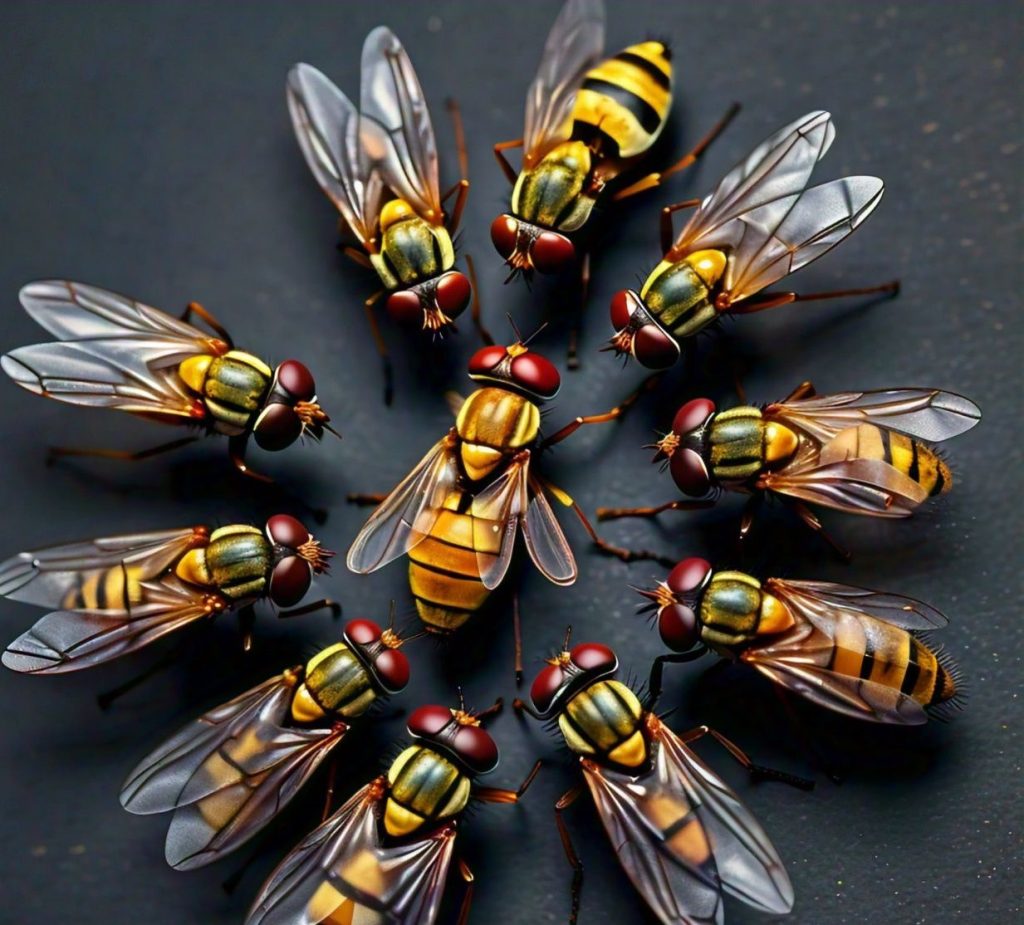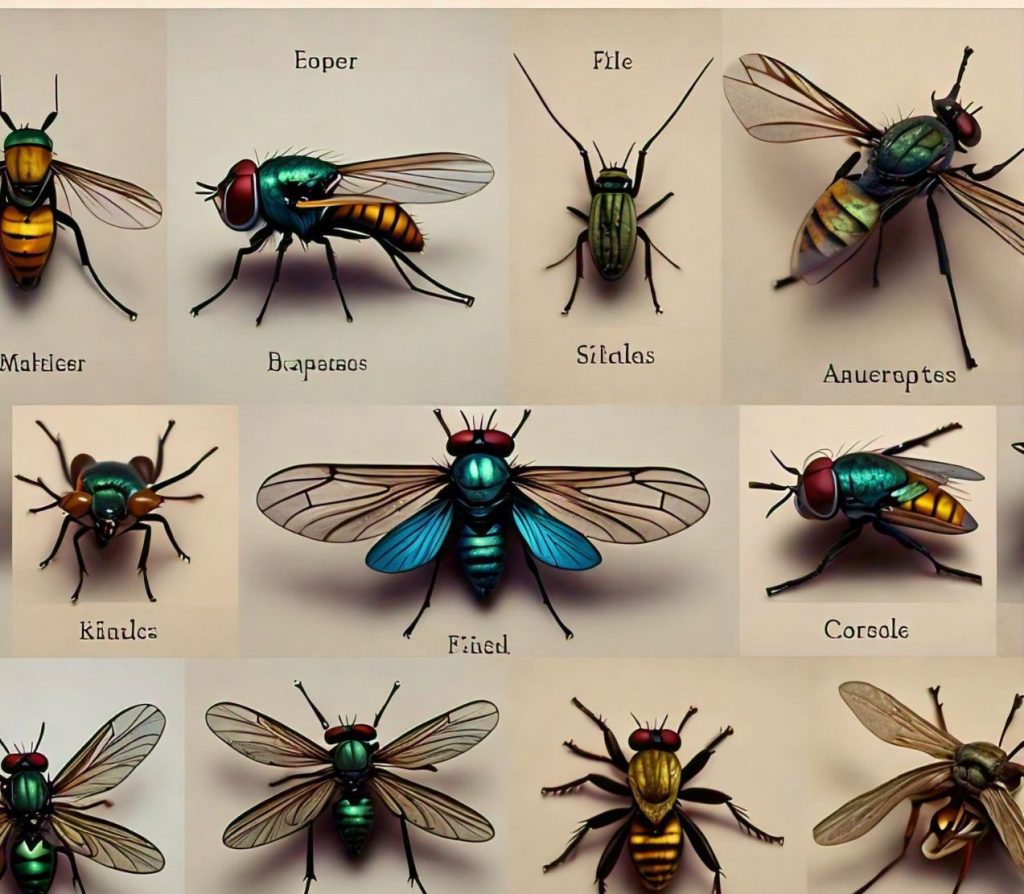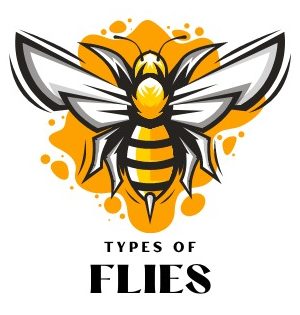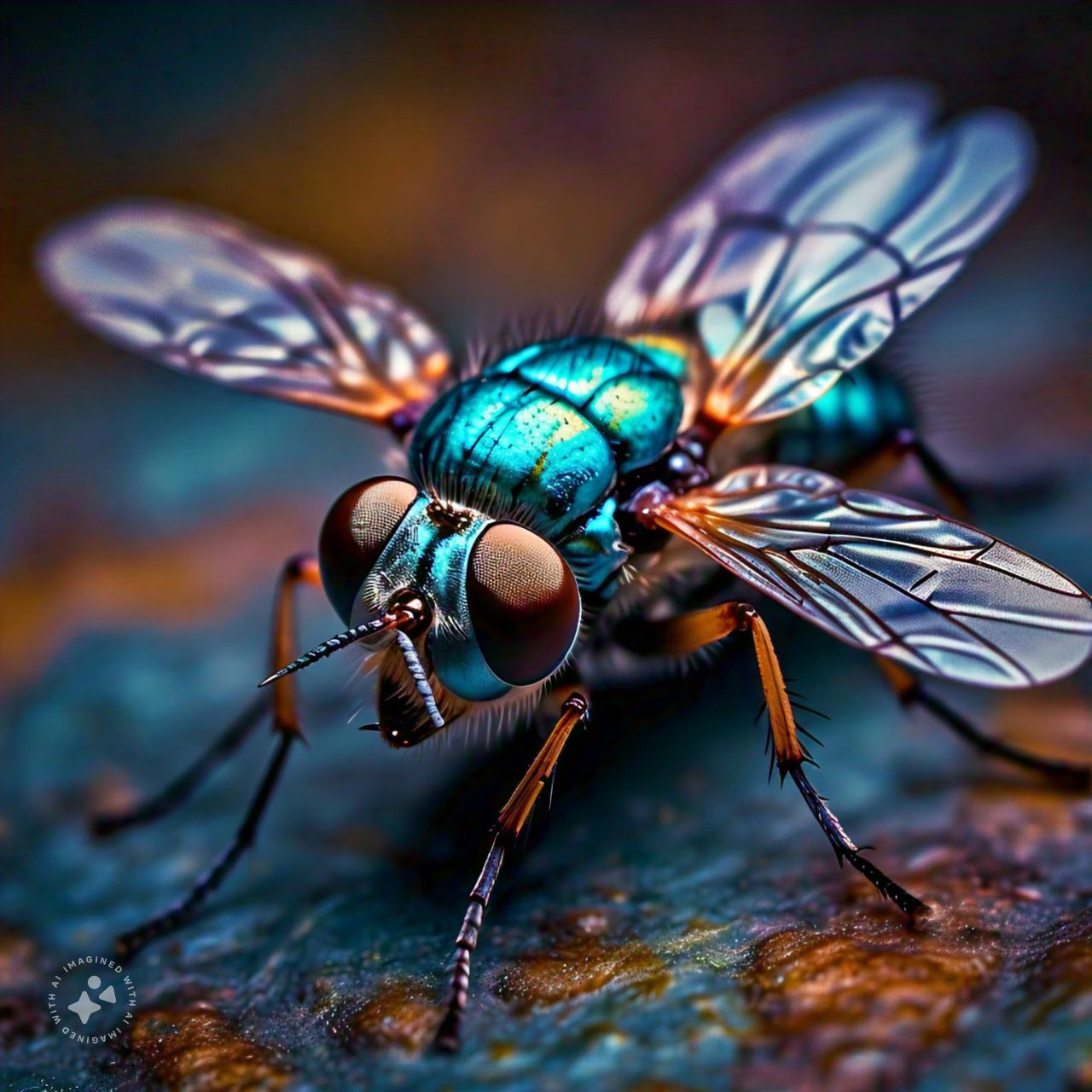Different Type of Flies are among the most common and diverse insect fly found across the globe. Understanding the different types of flies can help in identifying, controlling, and preventing infestations in both homes and gardens. This article will explore various types of flies, their characteristics, and practical methods to keep them at bay.

1. Introduction to Different Type of Flies: Understanding Their Diversity
Flies belong to the order Diptera, which means “two wings.” They are incredibly diverse, with over 120,000 species recorded worldwide. All kinds of flies range from common house flies to more exotic species found in specific regions. Each type has its unique characteristics, breeding habits, and preferred environments.
2. Different Type of Flies Found in Homes
House Flies
House fly species are one of the most common types of flies found in households. They are typically gray, about 1/4 inch long, and have four dark stripes on their thorax. House flies are known to spread diseases and are attracted to food waste and decaying organic material. Unlike other species, house flies do not bite humans but can cause allergic reactions.
Fruit Flies
Different type of Fruit flies are small, about 1/8 inch long, and are commonly found around ripe or rotting fruits. These flies are attracted to fermenting organic material and can quickly become a nuisance in kitchens. Controlling fruit flies involves removing breeding sites and keeping areas clean and dry.
Drain Flies
Also known as moth flies, drain flies are tiny flies that breed in the sludge inside drains, sewers, and septic tanks. They are typically found in bathrooms and kitchens. Although they do not bite, drain flies can become a significant nuisance when they breed in large numbers.
Cluster Flies
Cluster flies are slightly larger than house flies and have a distinct sluggish behavior. These species of flies are known to enter homes in large numbers during the fall, seeking shelter for the winter. Unlike other types of flies, cluster flies do not breed indoors.
Different Type of flies that bite
Biting flies, such as horseflies and black flies, are more aggressive and can cause painful bites. These flies are often found near bodies of water and are attracted to animals and humans.
3. Identification of Different Type of Flies with Pictures
Visual identification is crucial for understanding the different types of flies. Images of different types of flies can help in distinguishing between species, especially when dealing with infestations. Whether you are identifying house flies, fruit flies, or biting flies, using pictures can aid in recognizing specific characteristics, such as body size, color, and wing patterns.

4. The Life Cycle of Flies: From Eggs to Adults
Understanding the life cycle of flies is essential for effective control. Flies typically go through four stages: egg, larva, pupa, and adult. The life cycle can vary between species, with some flies completing their development within a week, while others may take several months.
Fly Eggs and Larvae
Fly eggs are usually laid in decaying organic material, food waste, or moist environments. The eggs hatch into larvae (commonly known as maggots), which feed on organic material. Identifying fly eggs and larvae in breeding sites is crucial for controlling infestations early.
Adult Flies
Adult flies are the most noticeable stage and are responsible for spreading diseases and laying eggs. Controlling adult flies involves removing breeding sites, using traps, and maintaining cleanliness in and around the home.
5. Common Breeding Sites and Infestation Control
Species of flies are attracted to specific breeding sites, depending on the species. For instance, house flies prefer decaying organic material, while fruit flies are attracted to fermenting fruits and vegetables. Identifying and eliminating these breeding sites is the first step in controlling fly populations.
Breeding Sites
- House Flies: Food waste, garbage, and decaying organic material.
- Fruit Flies: Overripe fruits, fermenting liquids, and damp areas.
- Drain Flies: Sludge in drains, sewers, and septic systems.
Control Methods
- Cleanliness: Regular cleaning of potential breeding sites is essential for preventing infestations.
- Traps: Various traps, such as sticky traps and UV light traps, can effectively capture adult flies.
- Chemical Control: Insecticides may be used in severe infestations but should be handled with care.
6. How Different Type of Flies Affect Human Health
Different Type of Big Flies are more than just a nuisance; they can pose significant health risks. House flies are known carriers of diseases like salmonella and E. coli, while biting flies can transmit diseases like tularemia. Understanding how different types of flies affect human health is crucial for taking preventive measures.
7. Flies in Different Regions: A Look at the United States, UK, and Beyond
Different regions have varying types of black flies, influenced by the local climate and environment. For instance, the common house fly is found worldwide, while specific types of flies, like the cluster fly, are more prevalent in temperate regions like the United States and the UK.
Flies in the United States
In the United States, flies like house flies, fruit flies, and drain flies are common in households. The climate and availability of food waste make these flies particularly prevalent in urban and suburban areas.
Flies in the UK
The UK has a similar range of flies, with cluster flies being more common due to the temperate climate. Biting flies, such as midges, are also prevalent, especially in rural areas.
Flies in Florida and California
In regions like Florida and California, the warmer climate attracts a wide variety of flies, including biting flies, house flies, and fruit flies. These areas also experience higher rates of fly infestations due to the availability of breeding sites.
8. Preventing and Managing Fly Infestations
Preventing fly infestations involves a combination of cleanliness, regular inspection, and timely intervention. By understanding the different types of flies and their habits, homeowners can implement targeted strategies to keep flies at bay.
Regular Inspection
Regularly inspect your home for potential breeding sites, such as garbage bins, drains, and compost piles. Early detection is key to preventing a full-blown infestation.
Proper Waste Management
Proper disposal of food waste and organic material is essential for preventing house flies and fruit flies. Use sealed containers and dispose of waste regularly.
Using Insecticides
Insecticides can be effective in controlling fly populations, especially in outdoor areas. However, they should be used cautiously and in accordance with safety guidelines.
9. Conclusion: The Importance of Understanding Different Type of Flies
Understanding the different types of flies, their habits, and their impact on human health is crucial for effective control. By implementing preventive measures and maintaining cleanliness, you can keep your home free from these pesky insects. Whether you are dealing with house flies, fruit flies, or biting flies, knowing how to identify and manage them will ensure a healthier living environment.


[…] Flies The common house fly (Musca domestica) is one of the most widespread fly species in Virginia. These flies are often found in and around homes, attracted to food waste, […]
[…] term “white” in Mayfly White eyes typically refers to the pale or translucent appearance of some mayfly species during their subimago (pre-adult) stage. This stage is […]